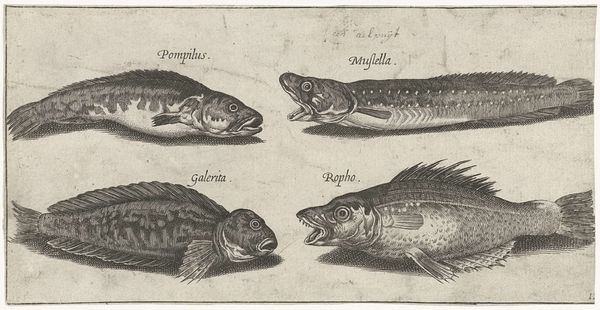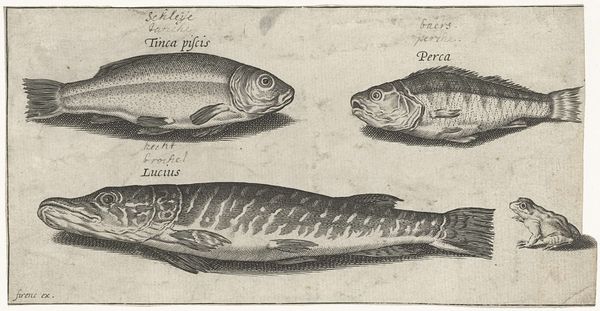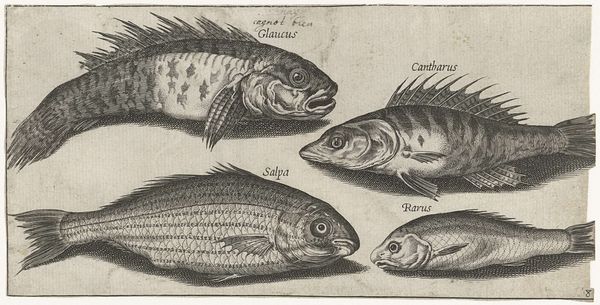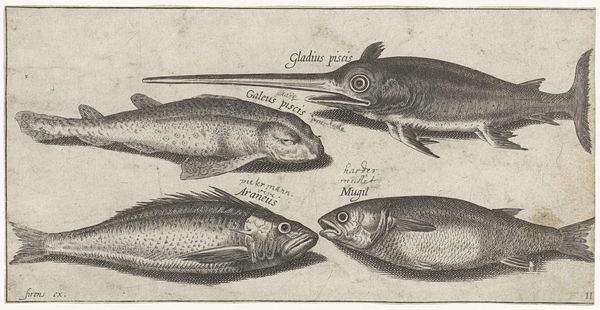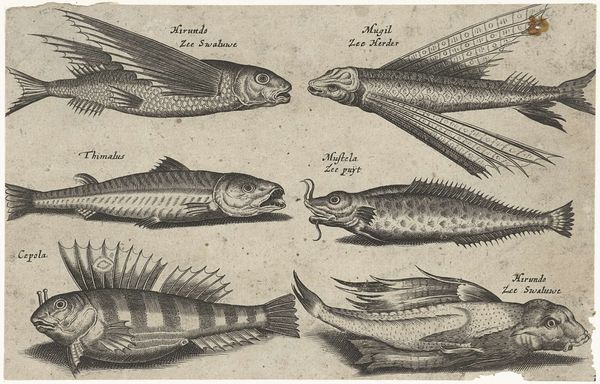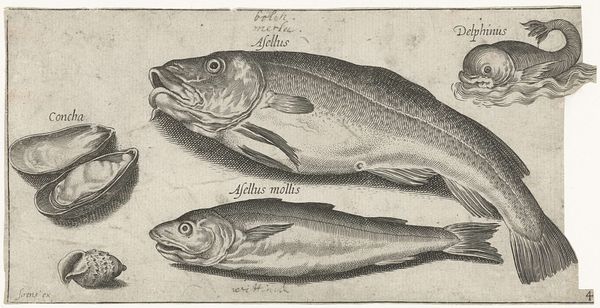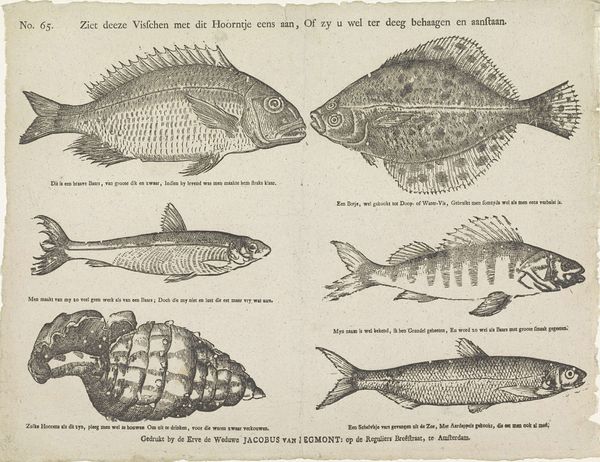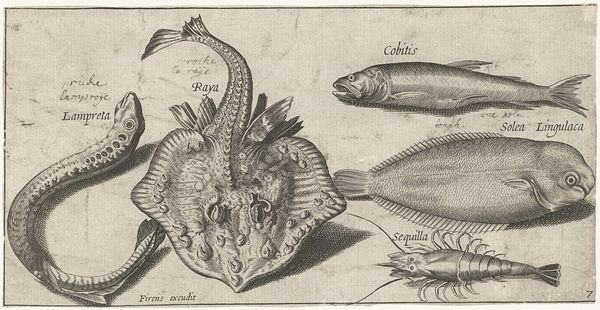
print, engraving
#
baroque
# print
#
old engraving style
#
engraving
#
realism
Dimensions: height 93 mm, width 184 mm
Copyright: Rijks Museum: Open Domain
Editor: Here we have a print titled "Grondel, bokvis, wijting en een andere vis" which translates to "Goby, bogue, whiting and another fish." It’s an engraving by Pierre Firens, dating sometime between 1600 and 1638. I'm struck by how meticulously rendered each fish is. What social or historical contexts might inform how we view these four fish? Curator: That's an interesting observation! Consider that this print emerged during a period of burgeoning scientific exploration and classification. While seemingly a simple depiction of different fish, this work speaks to a larger impulse to understand and categorize the natural world. How might this relate to colonialism? Editor: So, it’s about power? Like, classifying nature is about controlling it, or at least trying to understand it within a specific European framework? Curator: Exactly! The act of naming and classifying—attaching "Gobionus," "Merula," "Farra," and "Salpa" to these creatures—is inherently about establishing a system of knowledge, and often, control. Who gets to name, who gets to decide what's important—these are inherently political questions. Consider who had access to such images and how that might inform their views. Editor: I never thought about it that way, it seemed like a still life, but placing the artwork in a framework that encompasses identity and colonialism, helps to reveal previously unseen layers. It's more than just fish; it's about asserting a certain kind of authority. Curator: Precisely. And thinking about access to knowledge – who *couldn't* name, and what did that mean to the imbalance of power? So much of our visual culture reinforces pre-existing hierarchies. Editor: That gives me a lot to consider as I examine other works of art; that they represent both themselves, but also the systems and beliefs that birthed them. Curator: Indeed, always question what appear as givens! It might reveal hidden social agendas.
Comments
No comments
Be the first to comment and join the conversation on the ultimate creative platform.
